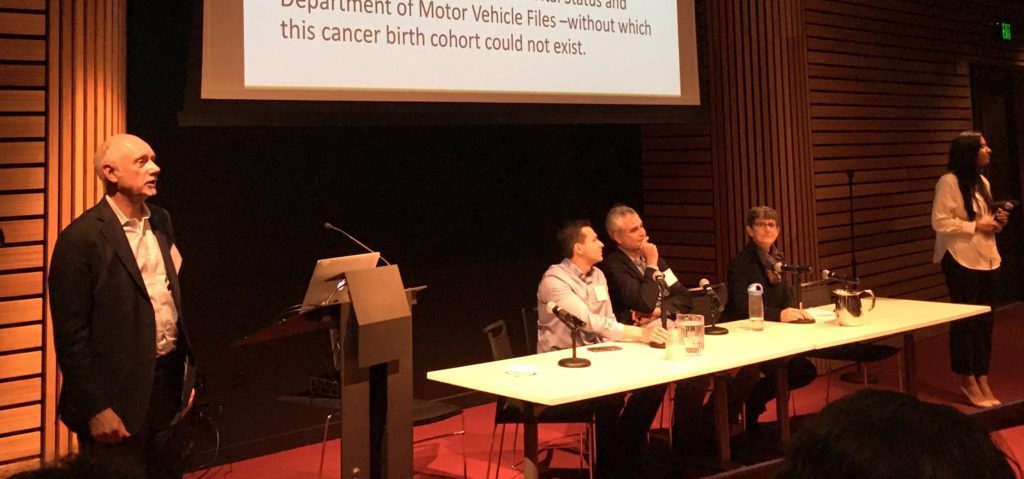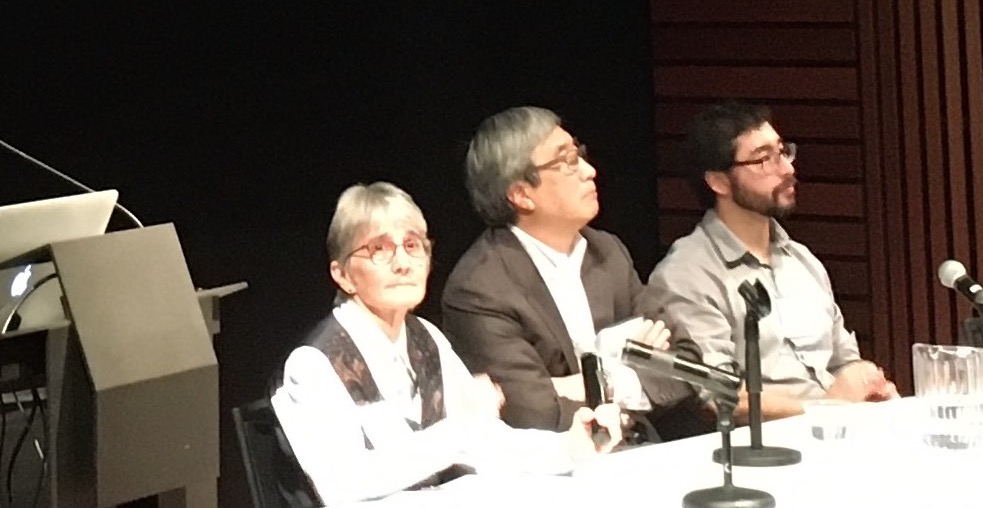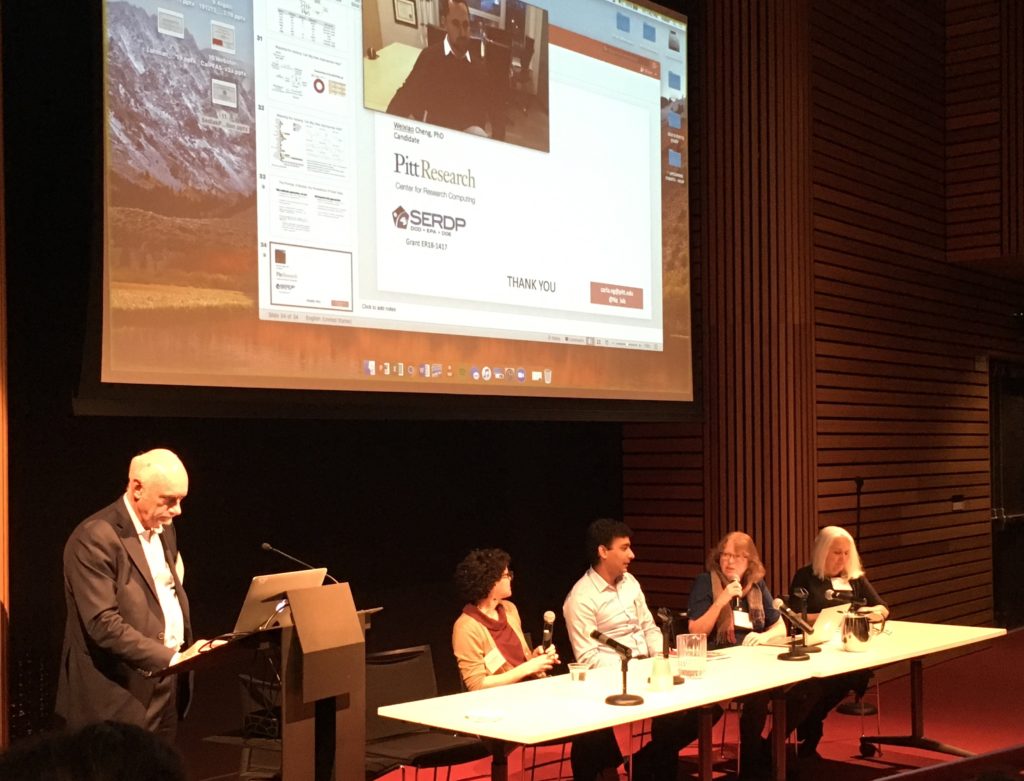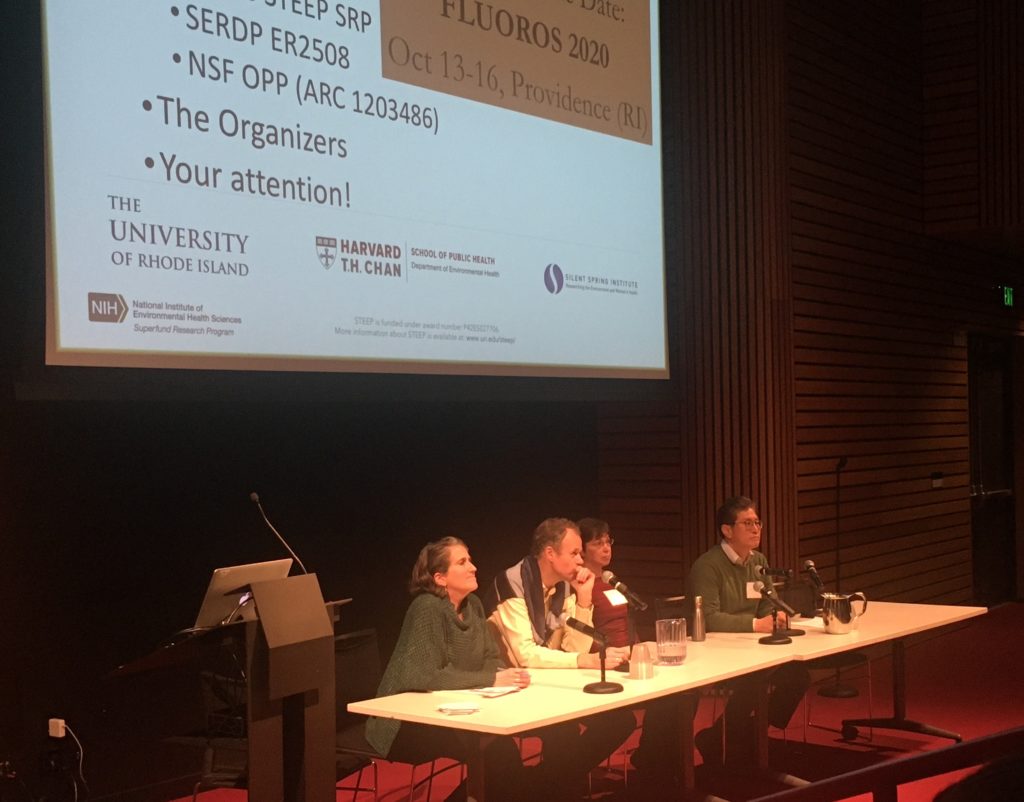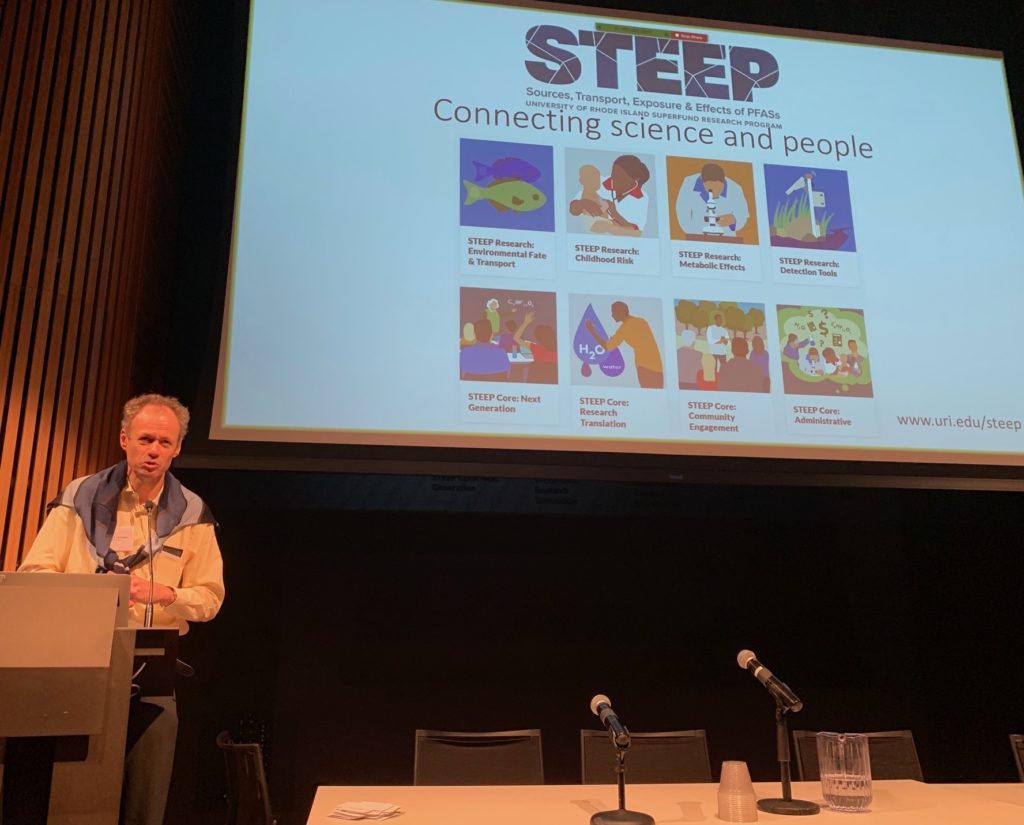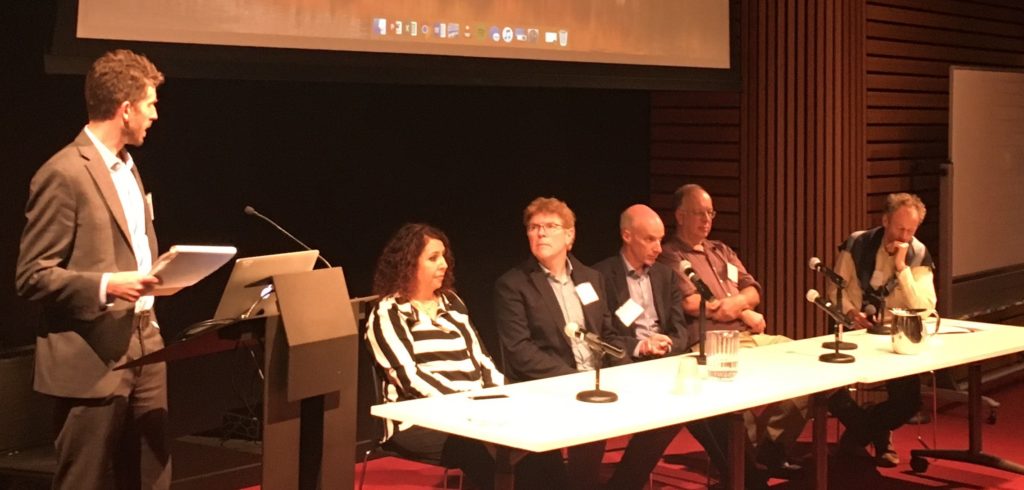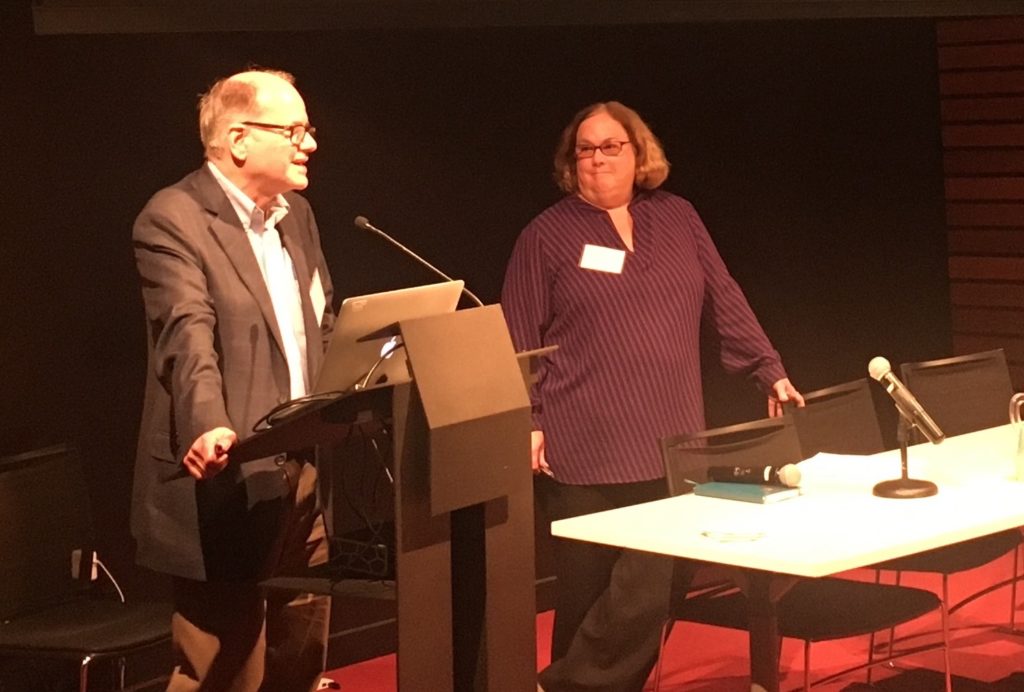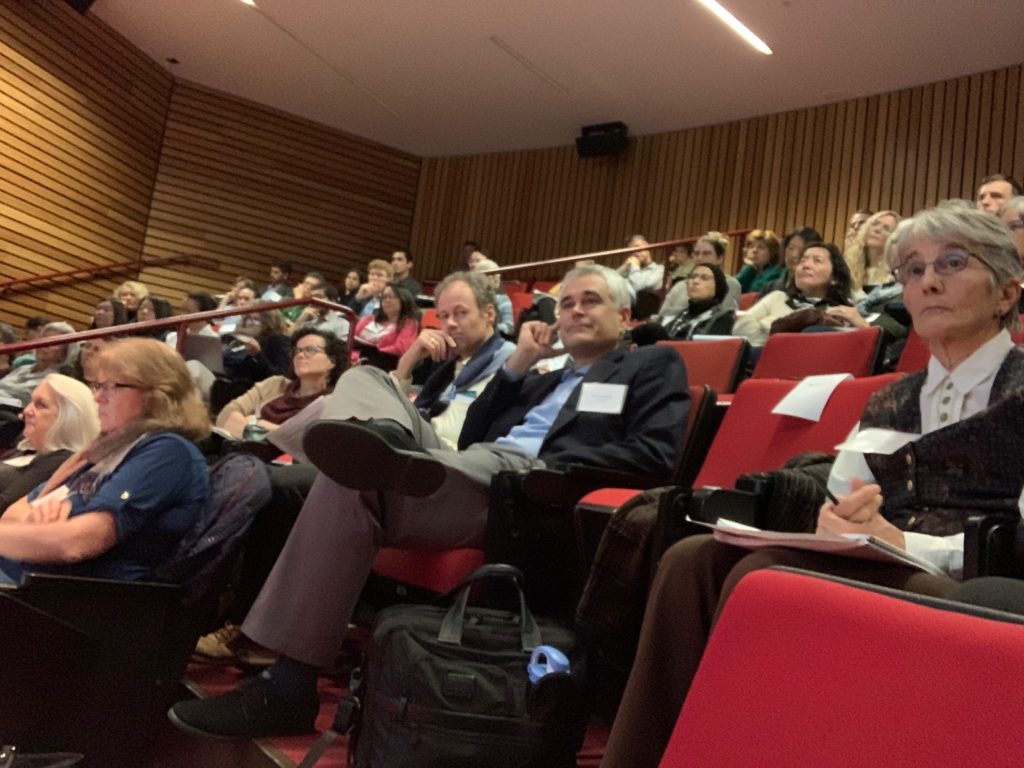PFAS contamination: An emerging problem in California
Dec 13, 2019. Program 9am – 5pm.
Hosted by Martyn Smith, Director, UC Berkeley Superfund Research Program. With Office of Environmental Health Hazard Assessment, California EPA.
Spotlight on Addressing PFAS Contamination in California
On Dec 13, 2019, the Research Translation Core of the Superfund Research Program at UC Berkeley, hosted a workshop, The Problem of PFAS Contamination: How Can We Make Rapid Progress to Address it? at the Brower Center in Berkeley. The workshop, which was co-sponsored by Lauren Zeise, Director of Office of Environmental Health Hazard Assessment (OEHHA), CalEPA, convened a series of experts from academia and national and California state government agencies to address critical issues and identify short and long-term steps towards identifying and reducing hazard, with a focus on grouping and read-across approaches. Over a hundred people attended the workshop, representing a range of stakeholders.
Smith introduced the meeting objectives and format and Zeise gave an overview of the regulatory process in California before introducing Joaquin Esquivel, Chair of the California State Water Resources Control Board. Esquivel described the importance of the workshop in the context of California’s Human Right to Water Bill and related environmental justice issues. Kathy Durkin (UC Berkeley), Gina Solomon (Public Health Institute, California), and David Reif (North Carolina State University) introduced the chemistry of PFAS, grouping and read-across, respectively. Following the introductory talks, a series of speakers addressed what is currently known about the toxic effects of PFAS from human, animal, high-throughput and computational studies), including talks by Christopher Lau and Michael DeVito of U.S. EPA and Carla Ng of the University of Pittsburgh.
Later in the afternoon Rainer Lohmann (Director of the STEEP Superfund Research Program focused on PFAS), Tom Webster (Boston University SRP), and others described the available data and approaches to characterize and group PFAS in terms of their potential for bioaccumulation, and persistence and mobility in the environment. Active discussion was achieved through audience participation in a series of panel dicsussions following brief 10 minute presentations by each panellist. Toxicity, bioaccumulation, persistence and mobility are among the hazard traits identified by California’s Green Chemistry program, and form part of the 2008 California Laws AB 1879 and SB 509. Dr. Vincent Cogliano who recently joined OEHHA, CalEPA, as Deputy Director of Division of Scientific Programs, and Dr. Amy Kyle (UC Berkeley), led the final summary and discussion. A commentary on the workshop findings and recommendations is in development.
AGENDA
Background and Objectives for the Meeting:
- There are over 4,000 perfluoroalkyl and polyfluoroalkyl substances (PFAS) in use and many more possible breakdown products and metabolites.
- The carbon-fluorine bond is extremely strong and hence many PFAS are extremely persistent, while often being highly mobile in environmental media allowing them to contaminate water systems and supplies.
- Regulators wish to classify these chemicals into groups with regard to their toxicity (T), persistence (P), mobility (M) and potential for bioaccumulation (B).
- This meeting will discuss whether such grouping is possible and if so what approaches could be taken to generate the data required to make decisions.
- We will discuss what should be done in the short-term (1-2 years) and long-term (5-10 years) for each of the subject areas.
9.00 Opening Remarks: Where We Are and What We Want to Achieve Today
- Welcome and purpose of this meeting: Martyn Smith, Andres Cardenas (UCB)
- California perspective: Joaquin Esquivel (CA SWRCB)
- The Chemistry of PFAS – A Primer: Kathleen Durkin (UCB)
9:30 Introduction to Grouping and Read-Across – Gina Solomon (UCSF) on Grouping and David Reif (NCSU) on Read-Across
10.00 Characterizing Toxicity – Human Studies. Chair: Andres Cardenas (UCB)
- What do we know so far about health effects in humans? – Andres Cardenas
- CDC studies – Scott Bartell (UCI)
- Recent findings – Barbara Cohn (PHI)
10.40 Break
11.00 Characterizing Toxicity – Animal Studies and HT Screening. Chair: Melanie Marty (OEHHA)
- Summary of classical toxicology studies to date – Christopher Banks (OEHHA)
- Recent animal studies – Chris Lau (U.S. EPA)
- In Vitro Studies – Michael De Vito (U.S. EPA) by Videoconference
11.30 Collective discussion on characterizing and grouping PFAS on basis of toxicology and human studies. Chairs: Andres Cardenas and Melanie Marty (OEHHA). Morning participants.
12.00 to 1.00 Lunch
1.00 Characterizing Toxicity – Using Computational Toxicology. Chair: David Reif (NCSU)
- David Reif (NCSU)
- Carla Ng (U. Pittsburgh)
- Azhagiya Singam (UCB)
1.30 Collective discussion on characterizing and grouping PFAS on basis of computational toxicology. Chairs: Kathleen Durkin (UCB) and Lauren Zeise (OEHHA).
2.00 Characterizing Exposure and the Potential for Bioaccumulation? Chair: Rachel Morello-Frosch (UCB)
- Chair’s Summary – Rachel
- Biomonitoring data and results from drinking water monitoring – June-Soo Park (DTSC)
- Accumulation in Ecosystems – Rebecca Sutton (SFEI)
- Bioaccumulation of PFAS – Rainer Lohmann (URI)
Collective discussion on bioaccumulation.
2.50 Break
3.10 Characterizing the persistence and mobility of PFAS in the environment? Chair: Rula Deeb (GeoSyntec)
- Chair’s summary – Rula Deeb
- Assessing persistence and environmental mobility – Andre Algazi (DTSC)
- Quantifying persistence – Tom Webster (Boston U.)
- Removing persistent PFAS – David Sedlak (UCB)
Collective discussion on persistence and mobility
4.00 Collective discussion of how we group PFAS on the basis of persistence, mobility and potential for bioaccumulation. Can we rank/group them on basis of persistence, mobility and potential for bioaccumulation to control them better.
Chairs: Tom Bruton (Green Science Policy Institute) and Rainer Lohmann (URI). Afternoon participants.
4.30 What have we learned about grouping PFAS and what should be the next steps? Can we incorporate multiple traits, including but not limited to potential health impacts, in characterizing these chemicals?
Discussion led by Vincent Cogliano (OEHHA) and Amy Kyle
5.00 Closing remarks followed by Wine and Cheese reception
Abbreviations: DTSC, Department of Toxic Substances Control; NCSU, North Carolina State University; NTP, National Toxicology Program; OEHHA, Office of Environmental Health Hazard Assessment; PHI, Public Health Institute; SFEI, San Francisco Estuary Institute; UCB, UC Berkeley; UCI, UC Irvine; UCSF, UC San Francisco; URI, University of Rhode Island STEEP Program.
VENUE
The meeting will be held at the:
David Brower Center
2150 Allston Way (between Shattuck Avenue and Oxford Street)
Berkeley, CA
https://browercenter.org
View Map
TRANSPORTATION
The David Brower Center is located approximately a 6-minute walk from the Downtown Berkeley BART station. Head south on Shattuck Avenue (towards Oakland) and turn east (towards the campus) at the first intersection, Allston Way.
PARKING
The City of Berkeley Oxford Garage is located under the Brower Center. The garage entrance is at:
2165 Kittredge Avenue (between Shattuck Avenue and Oxford Street)
Parking rates for this garage can be found here.
Information for other City of Berkeley garages and off-street parking can be found here.
ACCOMODATION
The nearest hotel is the:
Hotel Shattuck Plaza
2086 Allston Way (at Shattuck Avenue)
Berkeley, CA
http://www.hotelshattuckplaza.com
QUESTIONS
Please contact Cliona McHale (cmchale@berkeley.edu) with questions regarding the meeting.
